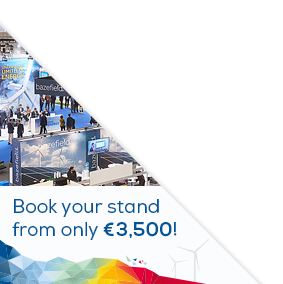Posters
Siblings:
ProceedingsProgrammeProceedingsSpeakersPostersContent PartnersElectrification StageMarkets TheatreR&I ActivitiesStudent DayProgramme Committee & abstracts reviewersPresenters dashboardCome meet the poster presenters to ask them questions and discuss their work
We would like to invite you to come and see the posters at our upcoming conference. The posters will showcase a diverse range of research topics and provide an opportunity for delegates to engage with the authors and learn more about their work. Whether you are a seasoned researcher or simply curious about the latest developments in your field, we believe that the posters will offer something of interest to everyone. So please, join us at the conference and take advantage of this opportunity to learn and engage with your peers in the academic community. We look forward to seeing you there!

PO257: Successful obsolescence management in onshore wind power
Dana Holstein, Product Manager eCommerce, ENERCON
Abstract
Europe is investing heavily in the expansion of renewable energies. Industry and politics are certainly addressing the task of expanding capacity to 510 GW by 2030. While this political goal is primarily pursued through the installation of much-needed new capacities, rising energy prices ensure that already implemented wind energy converters (WEC) are being retained longer than the originally assumed End-of-Life (EoL), since the continued operation is economically worthwhile for the operators. This decision has led to an unforeseeable strong demand for spare parts and services. The after sales market in onshore wind power is booming, due to the high number of old WECs in operation. The battle for spare parts has long begun, forced by already disrupted supply chains. WEC-manufactures are not sufficiently prepared for this increase in demand for spare parts and service. In parallel, they are discontinuing services for their first generations of WECs. Counteracting missing spare parts is precisely the goal of obsolescence management (OM). OM regulates the identification and handling of components that are no longer available in the original specifications. Besides the economically optimal reaction to a product discontinuation notice (PDN), it is also about the continuous monitoring of the supply situation in order to identify obsolescence at an early stage. While OM is an integral part in, for example, the electronics, automotive and railroad industries, the wind power industry lags far behind. Successful OM not only addresses the problem of missing parts but also stabilizes the overall supply situation for all participants in the supply chain. It may well lead to a competitive advantage horizontally. For this reason, this research paper examines the industry-specific success factors for the introduction of obsolescence management in the onshore wind power sector.







